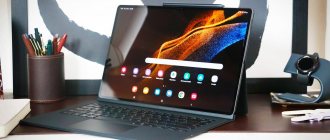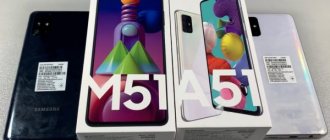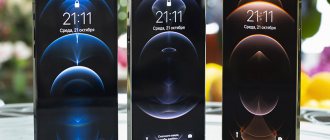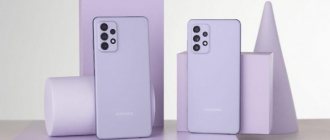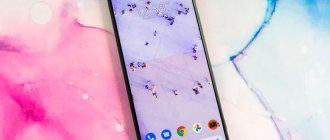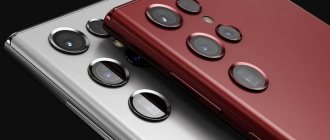Every time we conduct summary tests like this - especially when they involve so many smartphones (in this case, six) - we complain about the different approaches manufacturers take to organizing multi-camera systems. Although right now we can record the moment when everyone more or less moved in the same direction. Yes, some offer four focal lengths available by default (like Xiaomi in the Mi 10 Ultra), others use three-camera systems without an additional depth sensor (whether TOF or LiDAR). But the general direction has already been determined, and no one dares to deviate from it.
The classic flagship triad: along with the main camera, which works with a classic focal length (25-27 mm), there is always a wide-angle module and a zoom camera. The differences lie mainly in the attitude towards the zoom camera. Someone (Samsung, Xiaomi, Huawei) is trying to offer the user the maximum possible zoom using a periscope module, inevitably sacrificing aperture. Others (Sony, Apple in this case) consider it right to use this camera primarily for portraits, offering 2x or 3x zoom. The iPhone 12 Pro Max, for example, has a 2.5x zoom.
Be that as it may, comparing smartphones has become a little easier in technical terms - there are no more scenes where we would be forced to give someone a “zero” for not having the appropriate module. In addition, everyone now knows how to turn on night mode with multi-frame exposure stitching, everyone uses neural network calculations to correct the picture. I, however, tried to minimize their influence, including AI assistants only in some scenes - however, the iPhone and Xperia do not have options to activate or disable neural network assistance. A disclaimer is necessary in any case: there is currently no objective method for comparing cameras. Yes, the pictures were taken under the same conditions, the capabilities of the cameras of the test participants are quite close, 100% crops are highlighted - but the final assessment in any case is done by eye, subjectively. All photographs and crops are attached - you can look and evaluate for yourself, and your conclusions may not necessarily coincide with ours.
⇡#Test participants and testing methodology
In this material we compare six flagship smartphones: iPhone 11 Pro Max, iPhone 12 Pro Max, Huawei Mate 40 Pro, Samsung Galaxy Note20 Ultra, Sony Xperia 1 II, Xiaomi Mi 10 Ultra. We have already prepared detailed reviews of four of them - they are available via the links. Reviews of two more will come later. Yes, for the test we took two older iPhones at once - last year and the new one, one of the goals of the test was to compare them and find out how much progress Apple has made in camera technology.
| Model | Characteristics of built-in cameras |
| Apple iPhone 11 Pro Max | Triple module, 12 + 12 + 12 MP, ƒ/1.8 + ƒ/2.0 + ƒ/2.4, LED flash, phase detection autofocus and optical stabilization - in the main and TV modules |
| Apple iPhone 12 Pro Max | Quadruple module, 12 + 12 + 12 MP + LiDAR, ƒ/1.6 + ƒ/2.2 + ƒ/2.4, LED flash, phase detection autofocus and optical stabilization - in the main and telemodules |
| Huawei Mate 40 Pro | Quadruple module, 50 + 20 + 12 MP + TOF, ƒ/1.9 + ƒ/1.8 + ƒ/3.4, fivex optical zoom, tenx hybrid zoom, optical stabilizer, ultra-wide viewing angle |
| Samsung Galaxy Note20 Ultra | Triple module: 108 + 12 + 12 MP, ƒ/1.8 + ƒ/2.2 + ƒ/3.0, 5x optical zoom, optical stabilizer, ultra-wide viewing angle, LED flash |
| Sony Xperia 1 II | Quadruple module, 12 + 12 + 12 MP + TOF, ƒ/1.7 + ƒ/2.4 + ƒ/2.2, phase detection autofocus, optical stabilization in the main and TV modules, single LED flash |
| Xiaomi Mi 10 Ultra | Quadruple module: 48 MP, ƒ/1.9 + 48 MP, ƒ/4.1 + 12 MP, ƒ/2.0 + 20 MP, ƒ/2.2, phase autofocus, optical stabilization in the main and periscopic modules, triple LED flash |
We test in the same way as usual - we take different test scenes that simulate the most popular mobile shooting formats: city landscape, indoor shooting, macro, portrait, night landscape, and so on. When assessing the result, we look at sharpness, detail, saturation, contrast and overall color rendition. There will be no separate test for the HDR mode, since modern smartphones have learned to turn on this mode automatically as needed, so in all cases the HDR engine was set to “Auto”. Focusing was carried out without manually specifying the point, with the exception of portraits and macro. On cameras using sensors with a Quad Bayer filter, we shot at the default resolution. In all cases, shooting is done handheld, there are no stands or tripods, and front cameras are not included in the comparison. In each test scene, a smartphone can receive from 0 to 5 points, and the winner is ultimately determined by the total score.
Shooting in daylight
Front-camera
And here are the most serious changes. Not only has the front-facing camera learned to shoot cool at night and write HDR video, but the daytime quality has also improved.
11
12
It seems that Deep Fusion technology had a hand in this.
And the final couple of examples are night ones. I'm sure you can figure out whose photo it is.
Earth Sky
⇡#Scene 1 – city, cloudy weather, standard view angle, AI disabled where possible
A cloudy day, faded colors, everything is gray – the scene seems simple, but this is an illusion. The most revealing elements are small details on buildings (sharpness) and snow (white balance).
| From left to right in the top row: iPhone 11 Pro Max, iPhone 12 Pro Max, Huawei Mate 40 Pro. From left to right in the bottom row: Samsung Galaxy Note20 Ultra, Sony Xperia 1 II, Xiaomi Mi 10 Ultra | ||||
Both iPhones did the best job with the plot, especially in terms of white balance - it may seem a bit lukewarm, but in fact it is the closest to reality and also adds liveliness to the dull plot. Xiaomi is also not bad - the white balance is a little colder than it should be, but the sharpness is ideal. Huawei's frame is too cold, Samsung's is a little warmer, but there are problems with sharpness (pay attention to the yellow building), Sony looks the worst in terms of white balance - it's very red - and in terms of sharpness over the entire surface of the frame.
- Apple iPhone 11 Pro Max – 5 points;
- Apple iPhone 12 Pro Max – 5 points;
- Huawei Mate 40 Pro – 3 points;
- Samsung Galaxy Note 20 Ultra – 3 points;
- Sony Xperia 1 II – 3 points;
- Xiaomi Mi 10 Ultra – 4 points.
⇡#Scene 3 – city, cloudy weather, wide view angle, AI disabled where possible
The same scene as in the first case, only from a different angle and using an expanded viewing angle. I note that both iPhone and Samsung do not have autofocus on the wide-angle module, but Huawei, Sony and Xiaomi do. In a landscape scene, however, this does not matter.
| From left to right in the top row: iPhone 11 Pro Max, iPhone 12 Pro Max, Huawei Mate 40 Pro. From left to right in the bottom row: Samsung Galaxy Note20 Ultra, Sony Xperia 1 II, Xiaomi Mi 10 Ultra | ||||
The iPhone 11 Pro Max had the best white balance, but the detail wasn't very good. The iPhone 12 Pro Max unexpectedly lost in color reproduction to the previous model, but over the year it has gained in detail. Huawei Mate 40 Pro is the best in terms of detail, but is inferior to competitors in the breadth of camera coverage, and the white balance is a bit cold and has a purple accent. The Samsung Galaxy Note20 Ultra copes with this subject better than anyone else: normal detail, excellent coverage angle, acceptable white balance, and the lack of autofocus in a landscape scene does not affect anything. Sony Xperia 1 II and Xiaomi Mi 10 Ultra are outsiders here, but if Sony mainly has complaints about color reproduction, then Xiaomi has a lot of them: there is a weak dynamic range, insufficient detail, and excessive contrast.
- Apple iPhone 11 Pro Max – 4 points;
- Apple iPhone 12 Pro Max – 4 points;
- Huawei Mate 40 Pro – 3 points;
- Samsung Galaxy Note 20 Ultra – 5 points;
- Sony Xperia 1 II – 2 points;
- Xiaomi Mi 10 Ultra – 1 point.
Zoom
There’s nothing to compare here: the iPhone’s optical 2.5x zoom versus the Ultra’s 5x. And all this is in addition to the fact that on Samsung you can use 10x and even 20x hybrid zoom without any problems.
Shirik iPhone iPhone 2x
Shirik Samsung
Samsung
5x
The 12 Pro Max only has digital zoom beyond 2.5x, which instantly ruins the quality of the pictures.
Shirik Samsung Samsung 5x 10x 20x
50x
- iPhone: 3
- Samsung: 2
⇡#Scene 4 – nature, shooting around the light on a sunny day, extended viewing angle, AI enabled everywhere
A more complex scene: there are differences in brightness and color accents - nevertheless, all smartphones handled it confidently. As befits flagships in 2020, in fact. But there are nuances.
| From left to right in the top row: iPhone 11 Pro Max, iPhone 12 Pro Max, Huawei Mate 40 Pro. From left to right in the bottom row: Samsung Galaxy Note20 Ultra, Sony Xperia 1 II, Xiaomi Mi 10 Ultra | ||||
In a scene where neural network computing was actively involved (and could have an impact), Huawei turned out to be full force, even despite the lack of viewing width - it is by far the leader in detail and shows rich colors. Both iPhones are again not bad, but in detail and dynamic range they lose to Huawei too noticeably - I note that the 12 Pro Max is a little better at detailing small details in the shadows, but not so significantly as to give them different ratings. Samsung, Sony and Xiaomi performed at the same level, but in different ways: Note20 Ultra lacked detail, Xperia 1 II failed white balance, Mi 10 Ultra showed pale colors.
- Apple iPhone 11 Pro Max – 4 points;
- Apple iPhone 12 Pro Max – 4 points;
- Huawei Mate 40 Pro – 5 points;
- Samsung Galaxy Note 20 Ultra – 3 points;
- Sony Xperia 1 II – 3 points;
- Xiaomi Mi 10 Ultra – 3 points.
⇡#Scene 5 – city, cloudy weather, maximum optical zoom, AI disabled where possible
Another difficult scene to evaluate: here, different smartphones have different maximum optical zoom levels. And whether a larger zoom turns out to be an advantage is a moot point, but we added a conditional half point for better zoom abilities. Moreover, the Xiaomi Mi 10 Ultra immediately has modules with equivalent focal lengths of both 50 mm and 120 mm, but the 50 mm one is used by default only in portrait mode.
| From left to right in the top row: iPhone 11 Pro Max, iPhone 12 Pro Max, Huawei Mate 40 Pro. From left to right in the bottom row: Samsung Galaxy Note20 Ultra, Sony Xperia 1 II, Xiaomi Mi 10 Ultra | ||||
In this competition, in my opinion, the winner is the Xiaomi Mi 10 Ultra, which combines a serious five-fold zoom with excellent sharpness; The photo may be too contrasty, but it looks impressive. Huawei and Samsung performed approximately equally – the picture on the Mate 40 Pro looks more natural, but Samsung has slightly better detail. The iPhone 12 Pro Max with its 2.5x zoom is inferior to the above in terms of optical capabilities, but it shows a very sharp, contrasting and pleasing to the eye picture. The iPhone 11 Pro Max already has a 2x zoom and is also inferior in detail to the more recent Apple smartphone. The Sony Xperia 1 II, with its 3x zoom, shows good detail, but the image looks washed out and the white balance is off.
- Apple iPhone 11 Pro Max – 3 points;
- Apple iPhone 12 Pro Max – 4 points;
- Huawei Mate 40 Pro – 4 points;
- Samsung Galaxy Note 20 Ultra – 4 points;
- Sony Xperia 1 II – 3 points;
- Xiaomi Mi 10 Ultra – 5 points.
Shooting at night
Telephoto
Now about the TV. The Galaxy S21 Ultra has two of them: one at 240 mm with a tenx optical zoom, and the second at 72 mm, which gives approximately 3x zoom relative to the main camera. We will compare just three-fold zooms, because the iPhone also has the same zoom. In this photo you can see that the Samsung TV has noise even during the day; the picture, although brighter, is not as clear as on the iPhone.
And here's another example. Here, notice that I changed the profile again on the iPhone 13 Pro, made the image cooler and added a little contrast, and now it feels like it was taken not on an iPhone, but on a Pixel. In general, I would certainly say that three-time telephoto cameras are also comparable in quality. Plus or minus, you can get very similar pictures.
But Samsung has a superweapon - it’s a 10x telephoto camera and it can do just that.
Here's a portrait at 3x zoom in average evening light. The picture on the iPhone is softer, with fewer details on the skin. But this is the case when fewer details are better, because a light blur gives a matte look to the skin and smoothes it out a little, and trying to pull out details, like on the Galaxy, makes you look a little older. The Galaxy did a slightly better job of cropping the background, but the blur itself looks more natural on two iPhones, because there is a foreground in focus and a background where the hair behind the face is already a little blurred.
In this example with a portrait at 3x zoom, we again see that Samsung is trying to increase the details on the skin, which is not very good, and the face looks healthier in the iPhone photo. A portrait on the street in backlight caused problems in both cases, the face is dark, but the photo still looks better on the iPhone.
⇡#Scene 9 – still life with candles, standard viewing angle, AI disabled
An interesting plot both in terms of light - natural light from the window is combined here with candle lights and LEDs in garlands - and in terms of several “layers”, with pronounced natural bokeh.
| From left to right in the top row: iPhone 11 Pro Max, iPhone 12 Pro Max, Huawei Mate 40 Pro. From left to right in the bottom row: Samsung Galaxy Note20 Ultra, Sony Xperia 1 II, Xiaomi Mi 10 Ultra. | ||||
In this scene, Huawei wins - we pay attention to the bright, saturated colors in the foreground, and to the warm (read: appropriate to the scene) white balance, and to the neatly drawn bokeh. Both iPhones did a very good job with bokeh and white balance, but they lost in the dynamic range - pay attention to the overexposed, white, rather than blue lights in the blur zone. By the way, the character of the bokeh has changed in the new iPhone - in my opinion, it has become more impressive. Samsung also did a good job with this scene, but it produced too cool colors and overexposed the garlands in the blur zone. Xiaomi used the auto-HDR option, but overdid it - the picture looks pale and flat. Sony did a good job with the bokeh, but overall the picture is dark, with too little dynamic range.
- Apple iPhone 11 Pro Max – 4 points;
- Apple iPhone 12 Pro Max – 4 points;
- Huawei Mate 40 Pro – 5 points;
- Samsung Galaxy Note 20 Ultra – 3 points;
- Sony Xperia 1 II – 2 points;
- Xiaomi Mi 10 Ultra – 3 points.
⇡#Scene 10 – still life with paintings, standard viewing angle, AI disabled
Not the most complex plot, but it very well illustrates the work of smartphones both with detail in the shadows and - especially - with white balance.
| From left to right in the top row: iPhone 11 Pro Max, iPhone 12 Pro Max, Huawei Mate 40 Pro. From left to right in the bottom row: Samsung Galaxy Note20 Ultra, Sony Xperia 1 II, Xiaomi Mi 10 Ultra. | ||||
The Sony Xperia 1 II has the best white balance - but at the same time it is catastrophically behind in dynamic range. The Huawei Mate 40 Pro has the opposite situation - worse white balance, but better detail. The iPhone 11 Pro Max performs averagely in both parameters – noise in the shadows is especially noticeable. The iPhone 12 Pro Max is also quite noisy, but, firstly, a little less, and secondly, it performs better in terms of white balance. The most balanced picture is found in the Samsung Galaxy Note 20 Ultra and Xiaomi Mi 10 Ultra.
- Apple iPhone 11 Pro Max – 3 points;
- Apple iPhone 12 Pro Max – 4 points;
- Huawei Mate 40 Pro – 3 points;
- Samsung Galaxy Note 20 Ultra – 5 points;
- Sony Xperia 1 II – 3 points;
- Xiaomi Mi 10 Ultra – 5 points.
iPhone 8/iPhone 8 Plus
In 2022, Apple releases iPhone 8 and iPhone 8 Plus. The first has a single 12MP camera, the second is presented with two 12MP cameras.
Camera Specifications:
- iPhone 8 - one 12MP lens, ƒ/1.8.
- iPhone 8 Plus - two 12MP lenses (telephoto ƒ/2.8 and wide-angle ƒ/1.8).
iPhone 8 Plus added Portrait Lighting, a feature that paves the way for lighting effects that rival studio portraits.
⇡#Scene 11 – macro, standard angle of view, AI enabled where possible
None of the test participants had a special camera for macro photography, so I used the main camera to take close-ups - all of them had more or less the same capabilities, minus the iPhone 12 Pro Max, which has the longest minimum focusing distance.
| From left to right in the top row: iPhone 11 Pro Max, iPhone 12 Pro Max, Huawei Mate 40 Pro. From left to right in the bottom row: Samsung Galaxy Note20 Ultra, Sony Xperia 1 II, Xiaomi Mi 10 Ultra. | ||||
This is a case where old is better than new. Due to the longer minimum focusing distance, the iPhone 12 Pro Max provides fewer opportunities for real macro photography; the subject must be photographed either at a greater distance or using optical zoom, which involves losses in quality. However, both iPhones demonstrate good sharpness and natural white balance. The Samsung Galaxy Note 20 Ultra's camera has a shallow depth of field, which can make close-ups both a winner and a loser. In this case, the image rather acquires – the blur looks impressive. Huawei Mate 40 Pro lacks sharpness, the picture is too “smooth”, without emphasis on the foreground. Sony Xperia 1 II fails badly in dynamic range, Xiaomi again turns on its automatic HDR and produces a very pale picture that does not suit this scene at all.
- Apple iPhone 11 Pro Max – 5 points;
- Apple iPhone 12 Pro Max – 4 points;
- Huawei Mate 40 Pro – 3 points;
- Samsung Galaxy Note 20 Ultra – 4 points;
- Sony Xperia 1 II – 2 points;
- Xiaomi Mi 10 Ultra – 1 point.
Portrait photography
Conclusion
So, what can be concluded about comparing cameras? Both smartphones take very good photos and videos, but each with its own nuances. If you love telephotos, and if you need maximum zoom, then your choice is the Galaxy S21 Ultra. In general, the S21 Ultra is more versatile due to the number of cameras; you can, without leaving your seat, take a panorama on a narrow street and zoom in on an object 10 times without losing quality, if of course there is enough light. The iPhone is ideal if you take a lot of selfies or shoot videos, here it is undoubtedly good. It’s great for shooting at any time of the day with an ultra-wide-angle camera, and in general, if you’re into photography or video shooting with a smartphone, the iPhone is also good because it has a lot of cool apps that expand the capabilities of the smartphone, from Halide to Moment and Spectr. That's all, what do you think about these cameras, what do you think? It also seems to you that we are already fighting over some details and nuances. However, we are waiting for the new Pixel 6 and will see what happens there, and we will definitely compare it with the iPhone 13 Pro.
⇡#Scene 12 – in natural light, long shot, without enhancement
The classic scene of portrait shooting in natural light is almost full-length - but it is curious that the Xiaomi Mi 10 Ultra is not very suitable for such a scene, its portrait mode is fixed and works with a 2x zoom. The rest of the test participants allow you to change the focal length.
| From left to right in the top row: iPhone 11 Pro Max, iPhone 12 Pro Max, Huawei Mate 40 Pro. From left to right in the bottom row: Samsung Galaxy Note20 Ultra, Sony Xperia 1 II, Xiaomi Mi 10 Ultra. | ||||
All smartphones produced a sharp picture with a small (albeit artificial) depth of field and correct separation of the model from the background; the differences here are in details such as skin tone (iPhone 12 Pro Max and Sony Xperia 1 II overestimated the color temperature) and in visual volume - due to active equalization of lights and shadows, the same Sony and iPhone with Xiaomi joining them demonstrate a subjectively “flat” picture. The rest of the testing participants performed at approximately the same level, but I would not call the picture ideal in any case.
- Apple iPhone 11 Pro Max – 4 points;
- Apple iPhone 12 Pro Max – 3 points;
- Huawei Mate 40 Pro – 4 points;
- Samsung Galaxy Note 20 Ultra – 4 points;
- Sony Xperia 1 II – 3 points;
- Xiaomi Mi 10 Ultra – 2 points.
Video shooting. Day
We will compare videos in 4K quality 30 frames per second. Only in this mode can smartphones switch to a wide-angle camera.
The iPhone has a higher quality, tube-based and, so to speak, smooth picture. Almost perfect stabilization plays an important role in this.
However, nothing surprising. For many years now, each generation of iPhone has been head and shoulders above video production than any Android smartphone. The latter outperform Apple devices only due to advanced 3x, 5x, and sometimes 10x zoom. And here each user chooses what is his priority: the overall quality of video recording or the ability to photograph something in the distance.
⇡#Scene 13 – artificial light, close-up, with enhancement (where available)
In this scene the situation is very difficult. The perception of portraits depends on taste - and this is especially aggravated by the fact that in smartphones, the beautifier is turned on at medium power, where it is available. This is where the Sony Xperia 1 II gets into trouble - its portrait mode with software background blur is fixed at the standard viewing width, without using zoom.
| From left to right in the top row: iPhone 11 Pro Max, iPhone 12 Pro Max, Huawei Mate 40 Pro. From left to right in the bottom row: Samsung Galaxy Note20 Ultra, Sony Xperia 1 II, Xiaomi Mi 10 Ultra. | ||||
Objectively, both iPhones demonstrated the sharpest image and the best separation of the subject from the background (with the most pronounced bokeh), but at the same time they did not work out the skin tone very well (too yellow) and emphasized all the flaws in appearance. Huawei greatly smoothed out the skin and “painted” a light shade, but the model liked this portrait the most - by a noticeable margin. Samsung stayed somewhere in the middle - this picture has a good balance, but artifacts are also noticeable. Xiaomi seems to have drawn the face well and blurred the background well, but “forgot” about other details - note the lack of detail on the jacket. The Sony gets a minus point for its inability to use the zoom - there's unnecessary geometric distortion visible in the picture - and overall shows mediocre dynamic range along with too-light skin.
- Apple iPhone 11 Pro Max – 4 points;
- Apple iPhone 12 Pro Max – 4 points;
- Huawei Mate 40 Pro – 4 points;
- Samsung Galaxy Note 20 Ultra – 4 points;
- Sony Xperia 1 II – 2 points;
- Xiaomi Mi 10 Ultra – 3 points.

